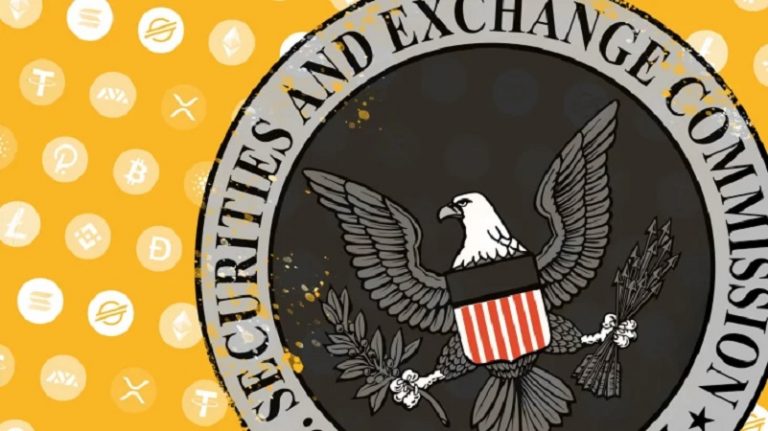
European asset manager CoinShares filed an S-1 registration with the U.S. Securities and Exchange Commission (SEC) on June 13, 2025, to launch a spot Solana (SOL) exchange-traded fund (ETF). The proposed CoinShares Solana ETF would track SOL’s price, be listed on Nasdaq, and include staking rewards to offer investors passive income from Solana’s proof-of-stake mechanism. Coinbase Custody and BitGo Trust are named as custodians. This filing makes CoinShares the eighth firm, joining VanEck, Fidelity, Grayscale, Franklin Templeton, Bitwise, 21Shares, and Canary Capital, in the race for a U.S. spot Solana ETF.
Solana’s price surged up to 9.5% to over $157 following the news, reflecting market optimism. The SEC has 240 days to review, with a decision expected by March 2026. Analysts estimate a 90% approval probability, driven by growing institutional interest and recent SEC engagement on staking and redemption details. The filing by CoinShares for a spot Solana ETF in the U.S. has significant implications for the crypto market, institutional adoption, and Solana’s ecosystem:
Increased Institutional Adoption
A spot Solana ETF would provide institutional investors with a regulated, accessible vehicle to gain exposure to SOL without directly holding the asset. This could drive significant capital inflows, as seen with Bitcoin and Ethereum ETFs, which attracted billions in assets under management. The inclusion of staking rewards in the ETF structure is a novel feature, potentially setting a precedent for future crypto ETFs. It could attract yield-seeking investors, enhancing Solana’s appeal over non-staking assets like Bitcoin.
Register for Tekedia Mini-MBA edition 19 (Feb 9 – May 2, 2026): big discounts for early bird.
Tekedia AI in Business Masterclass opens registrations.
Join Tekedia Capital Syndicate and co-invest in great global startups.
Register for Tekedia AI Lab: From Technical Design to Deployment (next edition begins Jan 24 2026).
Solana’s price jumped up to 9.5% to over $157 following the filing, signaling market optimism. Approval could further boost SOL’s price, with some analysts predicting a rally to $200-$250 by mid-2026, depending on ETF inflows. Increased liquidity and trading volume on Solana’s network could strengthen its position as a leading layer-1 blockchain, competing with Ethereum, BNB Chain, and others.
The SEC’s review of Solana ETFs, especially with staking features, could clarify regulatory treatment of proof-of-stake assets. Approval would signal a more crypto-friendly stance, potentially accelerating approvals for other altcoin ETFs (e.g., Cardano, Polkadot). However, the SEC’s concerns about staking (e.g., whether it constitutes a security) and custody arrangements could delay or complicate approval, impacting market sentiment.
An ETF could increase demand for SOL, benefiting Solana’s decentralized applications (dApps), DeFi protocols, and NFT marketplaces. Higher network usage could enhance Solana’s transaction fees and validator rewards, reinforcing its economic model. The ETF’s visibility could attract more developers to Solana, which already processes over 3,000 transactions per second, compared to Ethereum’s 15-30 TPS.
With eight firms (VanEck, Fidelity, Grayscale, etc.) competing for Solana ETFs, the race could lead to innovation in fee structures and marketing, benefiting investors. However, first-mover advantage (likely VanEck or Fidelity) could dominate market share. The 90% approval probability cited by analysts (e.g., Bloomberg’s Eric Balchunas) and recent price surges reflect confidence in Solana’s institutional appeal. Posts on X highlight excitement, with users like @CryptoBull predicting “SOL to $300 by Q2 2026.”
The SEC’s approval of Bitcoin and Ethereum spot ETFs in 2024 sets a precedent. Solana’s classification as a non-security in some legal contexts (e.g., Coinbase’s defense in SEC lawsuits) supports the case for approval. The ETF’s staking rewards (potentially 5-8% APY) differentiate it from Bitcoin ETFs, appealing to income-focused investors. This could drive higher inflows compared to Ethereum ETFs, which lack staking in current U.S. products.
Solana’s high throughput, low fees (~$0.01 per transaction), and growing ecosystem (e.g., 1.2M daily active users in Q2 2025) position it as a strong candidate for ETF-driven growth. The SEC may view staking rewards as securities, complicating approval. Past rejections of altcoin ETFs (e.g., Ripple’s XRP) and ongoing lawsuits against Coinbase and Kraken fuel skepticism. Some X users, like @RegSkeptic, warn of “SEC roadblocks until 2027.”
With eight Solana ETF filings, competition could dilute inflows, especially if Bitcoin and Ethereum ETFs continue dominating. Total U.S. crypto ETF assets are ~$90B (June 2025), with Bitcoin holding 70% market share. Critics argue Solana’s network is less decentralized than Ethereum, with 1,900 validators compared to Ethereum’s ~1M. High hardware requirements for validators ($5,000/node) could raise SEC concerns about manipulation risks.
A crypto market correction or macroeconomic headwinds (e.g., rising interest rates) could dampen ETF enthusiasm. Solana’s 2022 crash (from $260 to $8) lingers in some investors’ minds, as noted in bearish X posts like @CryptoBear2025’s “SOL ETF hype won’t last.”
The divide hinges on regulatory outcomes and market dynamics. Approval by March 2026 could validate bullish sentiment, driving SOL to new highs and cementing Solana’s institutional legitimacy. However, delays or rejections could reinforce bearish fears, capping SOL’s upside and slowing altcoin ETF progress. The SEC’s stance on staking and Solana’s ability to address centralization concerns will be pivotal.



